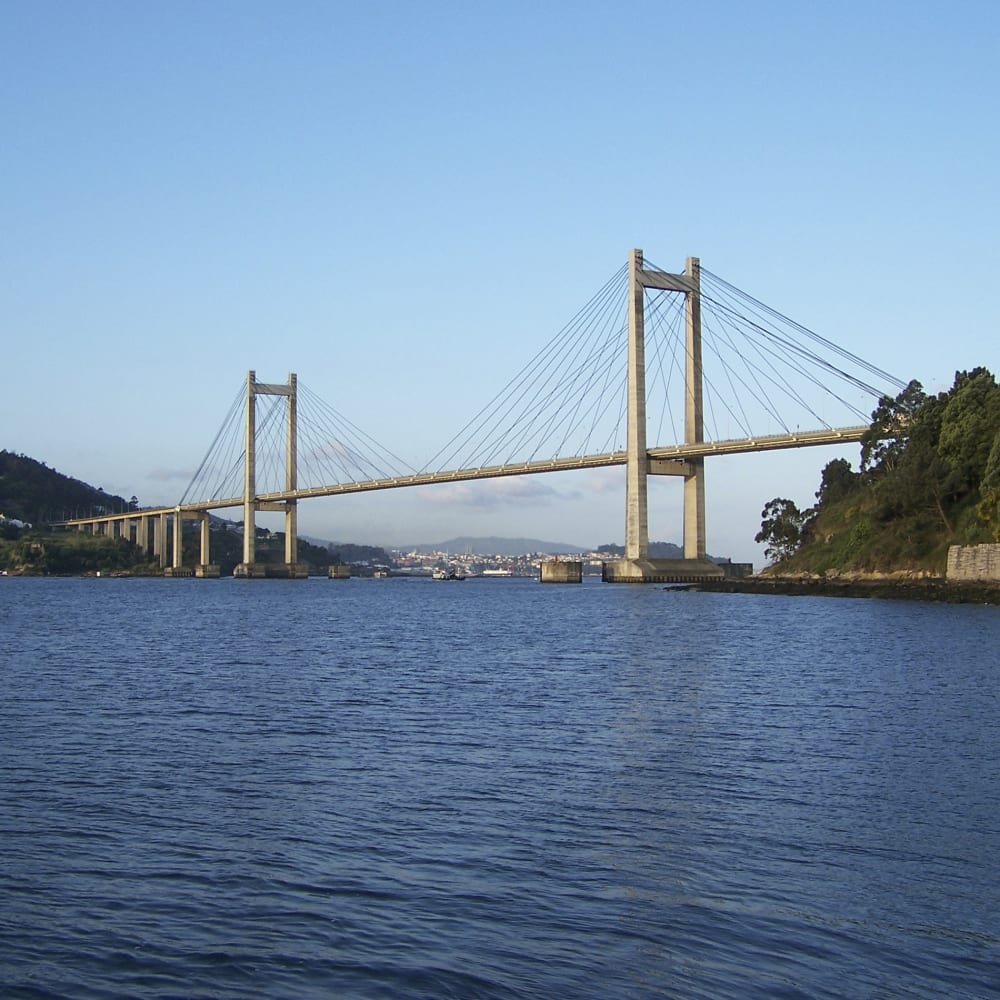Three Kings Sale - Up to 40% Off! Shop Sale
A Walk Through Vigo, Galícia
Pablo Vázquez | January 2004


Good morning everybody, I am Pablo Vázquez, a good friend of Don Harris. I wanted to show you a bit more of my city, Vigo, and its bay. I think the bay is the most beautiful part of the city, life goes around it, as Vigo was born around a fishing neighborhood: O Berbés .
O Berbés, about the 1920's. The arches on the houses ere for guarding the boats. Many of these houses still exist today.
Ok, let’s go! Today I went for a walk here (about 10 min. by car from home). This is Toralla Island, a private residential island. You can go the island and use the two little beaches it has each side of the bridge, but no access is allowed to the residential area.
Under the ground of the island is know the existence of a Roman cemetery and a VI B.C. pre-Roman village. There is an university marine scientific center too, some very very expensive houses, and a awful and controversial apartment building.
The photo is looking towards the West, to the Atlantic and America, so if you look to the left, you’re looking on the way to Baiona (South). But today we’re going to look right, to Vigo city, a bit inside the bay.
On the left at the bottom you can see the Cíes Islands. It’s a natural park, protected with only 2000 people per day allowed to go. You can visit them by boat and camp for some days. You have to carry your water, or buy it, and bring back your garbage. Great place for spending a day.
On the right, at the bottom, the mountains you see are the other side of the bay of Vigo, called O Morrazo. People from out of Vigo used to come to Vigo’s beaches, now people from Vigo to go to Morrazo’s less saturated and more virgin beaches. So great traffic jams at the end of the afternoon on summer coming back to Vigo, to cross the Bridge of Rande. So in 2-4 years, two more lanes will be added to the bridge.
The bridge was built over the Rande strait, where in 1702 took place the Battle of Rande:
The battle was fought on the 23rd of October, 1702 between the Anglo-Dutch and French-Spanish fleets, during the War of the Spanish Succession.Spanish galleons reached the Vigo estuary laden with the greatest treasure that ever crossed the Atlantic: gold, silver and jewels… And this is where the legend diverges: one side of the story ensures that the galleons took refuge in Vigo, where they were attacked with the load still aboard, the other states that the treasure had already been unloaded… although no one knew where it was taken.
The truth is that Jules Verne turned Captain Nemo into the first treasure hunter of the Vigo estuary in his novel 20,000 Leagues Under the Sea. Since then, there have been hundreds of expeditions in the waters of the Vigo estuary in search of the treasure. For example, in 2011 six more shipwrecks from the battle were located and identified.
Many rest of these ships can be seen at some parks of the city. This pic is in the O Castro Mountain, the top of the city.
...and even Jules Verne was in the city and incorporated it in his most known novel with Captain Nemo trying to find the sunken treasure.
So...you give us publicity in your novel...so we are setting up a monument to you in our harbor.
And in the inner part of the bay, there is another tiny Island, San Simón (ex-Templar monastery, ex-hospital, ex-civil war concentration camp).
...with another monument to Jules Verne that shows him with his novel, and two frogmen from Nemo’s crew searching for the treasure -you can only see them when the tide is low.
Hope you enjoyed this tiny travel.
Pablo
